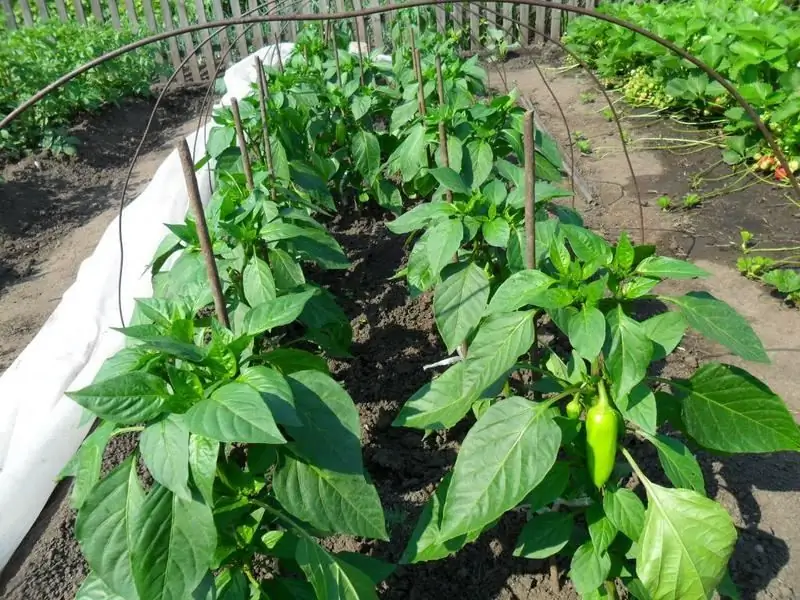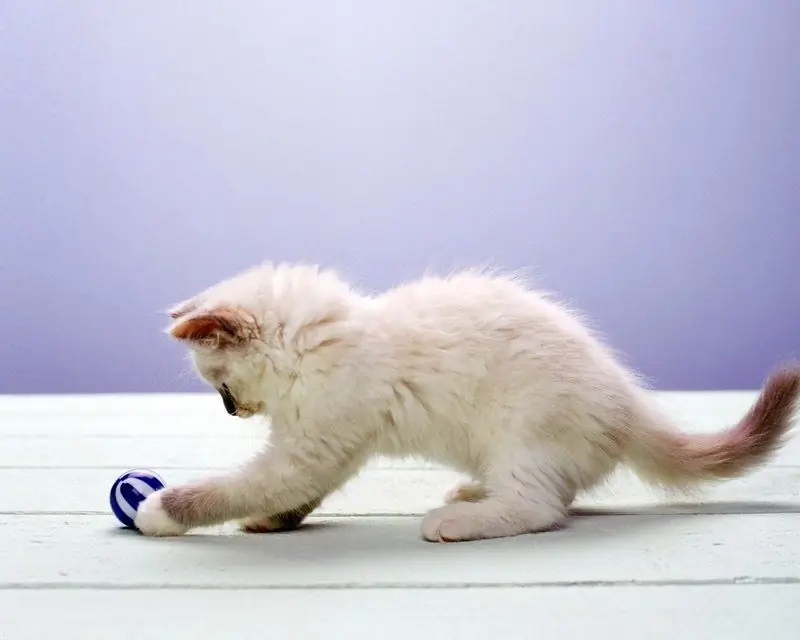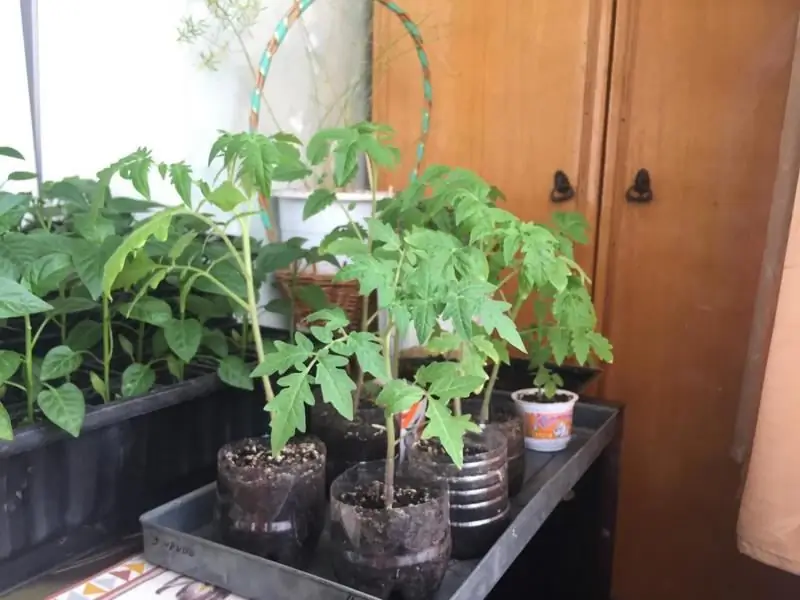
Table of contents:
- Author Bailey Albertson [email protected].
- Public 2023-12-17 12:53.
- Last modified 2025-06-01 07:32.
What can be planted after tomatoes and peppers and how to compact the planting

Tomatoes and bell peppers are related crops grown using a similar technology. True, pepper is more thermophilic, you have to tinker with it more. In addition, it is not the best predecessor for most vegetables, and after tomatoes, you must carefully choose the next crop. Not all vegetables can be planted next to both.
Content
- 1 What to plant after tomatoes and peppers for the next year
- 2 What should not be planted after tomatoes and bell peppers
- 3 What to plant in one bed: mixed plantings
- 4 Reviews
What to plant after tomatoes and peppers for the next year
There are practically no vegetables that could be grown in one place for several years in a row. And only tomatoes and potatoes can be planted in the garden for the next year, but then you still need to plant something else in this place for 3-4 years. And this something must be chosen correctly. It is even more difficult with bell pepper, which leaves behind the soil in a not very favorable state.
All predecessors and subsequent crops in the garden are determined in accordance with the rules of crop rotation, which are written on the basis of a wealth of experience and data from agronomic science. Actually, the main thing you need to know comes down to literally two provisions. First, the subsequent culture should be very different in nature from the previous one, so as not to be infected with the same sores and not to suffer from the same pests. Hence, they should not at least belong to one family. Secondly, it is necessary to take into account the food preferences of vegetables: after crops that greatly impoverish the soil, it is necessary to plant those that are content with a small amount of nutrients.
Once every 5-6 years, it is customary not to plant anything at all in the garden, to give the earth a rest. But most often summer residents cannot go for it, and sowing siderates can help them in resolving the issue. Actually, it is not superfluous to try every year, immediately after harvesting, to sow these herbs (oats, lupine, rye, etc.) on the garden bed and mow them without letting them grow. Siderata to a large extent bring the condition of the soil in order.

In the case of tomatoes and peppers, it is better not to pass by such simple schemes
An additional technique for alternating crops is to plant deep-rooted vegetables after those with roots close to the ground. Of course, it is necessary to take into account the composition of the soil in general, including its acidity and fractional composition.
Tomatoes are not an ideal precursor because they often get sick, especially late blight. If there were no diseases, almost everything can be planted after them. After all, they extract a moderate amount of food from the ground, and their roots are located at an average depth. True, the garden will still have to be prepared carefully, even in the fall. It is more difficult with peppers: even if they do not get sick, they leave behind a lot of toxic compounds in the soil, and after them sowing green manure is extremely desirable. Many crops can then be planted, but root crops are best.
Provided the soil is healed after tomatoes and peppers, it is best to plant:
- onions and garlic (they reliably heal the soil);
- any green crops;
- root vegetables (for example, carrots, radishes, beets);
- any types of cabbage (white cabbage, cauliflower, kohlrabi, Brussels sprouts, etc.);
- legumes (peas and beans): they promote the accumulation of nitrogen in the soil.

Peas are generally a universal culture: they are planted after almost any vegetable and almost before any
True, a lot of organic fertilizers will have to be applied before the same cabbage. The same applies to pumpkin crops, which, in principle, will grow in the former tomato garden, but will require a good filling of the soil. However, for cucumbers and tomatoes, the requirements for growing conditions are very different, so cucumbers are rarely planted after tomatoes.
What can not be planted after tomatoes and bell peppers
The strict ban on planting after peppers or tomatoes applies only to related nightshade crops. In addition to these vegetables, the most famous representatives of the family are potatoes, eggplants and physalis, which is less common in our beds. All these vegetables suffer from the same diseases, all of them are respected by the Colorado potato beetle, whose larvae hibernate in the soil.

Eggplants suffer from the same diseases as peppers and tomatoes
In addition to pumpkins and zucchini, it is highly undesirable to plant melons and gourds after tomatoes and peppers, such as watermelons and melons: they extract nutrients from the same soil layers. If you do not touch vegetables, you should not plant berries in this place, especially strawberries and strawberries. All bans can be lifted no earlier than in 3-4 years.
What to plant in one bed: mixed plantings
The question of how you can compact the planting of peppers or tomatoes is even more complicated. It is known that joint plantings are widely used by gardeners: they allow, for example, more rational use of the area, and many combinations of vegetables are so favorable that they increase productivity. The classic planting of onions and carrots on the same bed, for example, allows you to drive away both carrot flies and onions from the garden.

There are many reference tables to make planting together easier.
When grown outdoors, a small amount of basil or asparagus can be planted in a tomato or pepper bed: they drive away harmful insects from nightshade crops. Basil also contributes to a somewhat faster ripening of tomatoes. Sage or calendula planted next to them is good at fighting pests. Even a weed like stinging nettle is beneficial in growing tomatoes.
Planting next to radish peppers or tomatoes or various salad crops will not do any harm. And mint or lemon balm even improves the taste of tomatoes. The tomatoes themselves will help crops that aphids often overpower, such as squash or pumpkin. Although, of course, we are talking here not about one garden bed, but about the neighboring ones. If you just want to compact tomato or pepper plantings, you can plant a little onion, garlic, carrots or beets between them.
In a greenhouse, the question is even more complicated: there the microclimate is the same for all vegetables planted in it. As a rule, in greenhouses, peppers and tomatoes are planted side by side. Is it good? Yes OK. Tomatoes save peppers from the invasion of aphids (after all, it penetrates into the greenhouse). Both crops have similar growing conditions. The bushes can even be tied to the same common trellis. Several pea bushes can be planted along the edge of the bed.
But the joint planting of cucumbers and tomatoes (peppers), which gardeners often practice, cannot be considered useful. These vegetables will not interfere with each other in terms of the release of some toxicants, but they need different conditions for life and, above all, humidity. Cucumbers do not like drafts, the best humidity for them is 80-90%, and 50-60% is best for peppers or tomatoes. Planting together can lead to a significant decrease in yield.

When planting cucumbers and tomatoes together, it can be difficult to create the desired microclimate
Bad neighbor and eggplant: it needs a higher temperature, and humidity too, as well as a lot of sunlight, from which tall tomatoes can obscure blue ones. These crops also have different water requirements. If it is necessary to plant all of the listed heat-loving vegetables in one greenhouse, their correct arrangement must be observed. Cucumbers are planted on the north side of the building, and further south - according to the height of the plants (and this also depends on the variety). The shortest bushes are planted on the south side so that they do not obscure the taller plants from the sun.
Reviews
After tomatoes and peppers, in no case are other nightshade crops grown. The rest of the vegetables - depending on how the peppers and tomatoes felt in the garden. In the absence of diseases and in the case of the subsequent cultivation of green manures, many vegetables can be grown after them.
Recommended:
Interior Doors Enamel With A Description, Characteristics And Reviews, As Well As How They Are Best Combined In The Interior

What are interior doors with enamel and what are their main characteristics. Color options for door enamel and for which interior styles they are suitable
Interesting Facts About Cats And Cats: What Taste They Don't Feel, Do They Sweat, Do They Understand Human Speech And Answers To Other Questions

How cats differ from humans. How cats feel, hear, see, remember. Their relationship to the game. What does purr and tail wagging mean. Reviews
How Many Days After The Act Can You Find Out About Pregnancy, Learn About Conception By The Test, Before The Delay And After

When the first signs of pregnancy appear. When to take a pregnancy test. Blood test for hCG. Ultrasound to detect pregnancy. External signs
Fertilizers For Seedlings Of Tomatoes And Peppers: Store And Home Dressings

General rules for feeding tomatoes and peppers, recommendations for the frequency of fertilization. Popular store fertilizers used by folk remedies
Whiskers In Cats And Cats: What Are They Called Correctly And Why They Are Needed, What Will Happen If You Cut Them And Why They Fall Out Or Become Brittle

Features of the structure of the mustache in cats. What are they called and where they are located. What functions do they perform. What problems can a cat with a mustache have? Reviews
